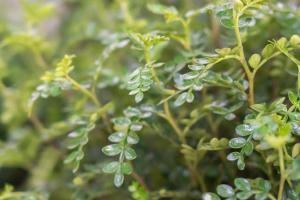How to Get Rid of Mushrooms Growing in Potted Plants
Mushrooms growing in potted plants can be unsightly and may even be harmful to your plant's health. They are a sign that the soil in your pot is moist, and the environment is damp and warm. This creates the perfect conditions for fungal growth. But, how do you get rid of mushrooms growing in your potted plants? Here are a few steps you can take:
Step 1: Remove the Mushrooms
The first step in getting rid of mushrooms in your potted plants is to remove them. You can use a small spade, trowel, or even your hands to carefully remove the mushrooms from the soil. Dispose of them in a plastic bag or in the trash. Make sure to wear gloves to avoid coming in contact with the mushrooms, as some species can be poisonous.
Step 2: Adjust Watering Habits
Mushrooms thrive in damp, moist environments. So, if you want to get rid of them, adjusting your watering habits should be your next step. Overwatering can contribute to the growth of fungi, so try to water your plant only when the top inch of soil is dry. Also, avoid watering late in the day or in the evening when temperatures are cooler, as this can increase humidity levels around your plant.
Step 3: Improve Air Circulation
Improving air circulation around your potted plant can also help to get rid of mushrooms. Ensure your plant is not placed in a confined area where air cannot flow freely. Consider using a fan on low speed to increase air movement around the plant. Alternatively, move the plant to a location that has better airflow.
Step 4: Repot the Plant
If the mushrooms keep coming back despite the above measures, it may be time to repot your plant. Start by removing the plant from its pot and removing all the soil. Inspect the roots for any signs of damage or rot - trim off any damaged roots using a pair of clean, sharp scissors. Finally, repot the plant in fresh, sterile soil that is well-draining. Reintroduce the plant to its original location, and monitor for any further signs of fungal growth.
Step 5: Use a Fungicide
If the above steps do not work, you may need to use a fungicide to get rid of mushrooms. Choose a product that is specifically designed for the type of fungus growing in your pot. Always follow the instructions on the label and wear protective clothing and gloves when applying the fungicide. It's important to note that some fungicides can be toxic to people and pets, so use with care.
Overall, getting rid of mushrooms growing in potted plants is not difficult. By adjusting your watering habits, improving air circulation, and repotting your plant, you can create an environment that is less hospitable to fungal growth. If all else fails, consider using a fungicide, but always use caution when handling chemicals.

 how many times do yo...
how many times do yo... how many planted tre...
how many planted tre... how many pine trees ...
how many pine trees ... how many pecan trees...
how many pecan trees... how many plants comp...
how many plants comp... how many plants can ...
how many plants can ... how many plants and ...
how many plants and ... how many pepper plan...
how many pepper plan...
































